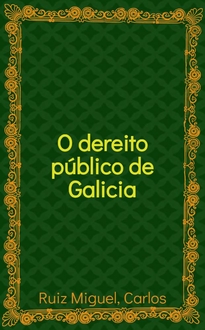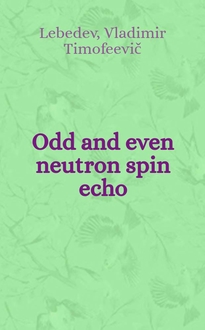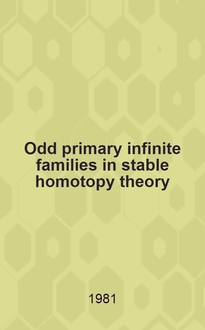Particle Physics – Models of nuclear structure
Particle Physics About this course: This course introduces you to subatomic physics, i.e. the physics of nuclei and particles. More specifically, the following ...
intrigano
Atomic Energy Levels | Quantum physics | Physics | Khan Academy
In this video, David explains how an atom can absorb and emit photons of particular values and how to determine the allowed values. Watch the next lesson: ...
Khan Academy
Nuclear Models
for PHY3211 online course.
Tonya Coffey
Stable and Unstable Nuclei | Radioactivity | Physics | FuseSchool
Stable and Unstable Nuclei | Radioactivity | Physics | FuseSchool How do you know if an atom is stable? In this video we are going to learn about radioactive ...
FuseSchool - Global Education
Liquid Drop Model & Semi-Empirical Mass Formula | Nuclear Physics
One can use several models to mathematically describe the nucleus of an atom. Today's topic is one of those models, the so-called "liquid drop model".
Pretty Much Physics
What are Protons, Neutrons, and Electrons? How are they Arranged Inside Atoms?
https://www.liacoseducationalmedia.com This video is a short excerpt from Shedding Light on Atoms Episode 5: Protons, Neutrons, and Electrons, part of the ...
LiacosEM
Episode 51: Atoms To Quarks - The Mechanical Universe
Episode 51. From Atoms to Quarks: Electron waves attracted to the nucleus of an atom help account for the periodic table of the elements and ultimately lead to ...
caltech
Why don't all heavy elements decay to Fe56
An explanation why heavy elements don't decay to the highest binding energy state and thus form Iron.
DrPhysicsA
The Semi Empirical Mass Formula
Describes the SEMF, the Nuclear Binding Energy, stable and unstable nuclei, beta decay, alpha decay, proton emission, neutron emission, fission.
DrPhysicsA
PhysicsLecture1
Basics of Atoms and Interactions Physics for Radiology Residents. Quiz: https://PollEv.com/surveys/hZ4HwLZGm9IlFRtiunHJB/respond.
Neil Hansen
Chem 203. Organic Spectroscopy. Lecture 07. Introduction to NMR Spectroscopy, Part 1
Description: This is a graduate course in organic spectroscopy, focusing on modern methods used in structure determination of organic molecules. Topics ...
UCI Open
Chemistry and Our Universe: How it All Works | Basic Structure of the Atom | The Great Courses
Chemistry is the study of matter and energy at the scale of atoms and molecules. As the most all-embracing discipline there is, it should be at the top of ...
The Great Courses Selects
Journey to the centre of a Neutron Star (Lecture - 07) by G Srinivasan
Time: 10:00 AM Venue: Ramanujan Lecture Hall / Madhava Lecture Hall, ICTS Campus, Bangalore This summer course aims to give a broad perspective on ...
International Centre for Theoretical Sciences
03/21/2017 - DSC - John P. Schiffer, Argonne Distinguished Fellow, CP1, science & evolution
John P. Schiffer, Argonne Distinguished Fellow - “CP1, science & evolution”
Argonne National Laboratory
Mod-01 Lec-10 How are Neutron stars bound
Nuclear Physics: Fundamentals and Applications by Prof. H.C. Verma,Department of Physics,IIT Kanpur.For more details on NPTEL visit http://nptel.ac.in.
nptelhrd
Robert Redwine
Robert Redwine Professor of Physics Director, Bates Linear Accelerator Center Dean for Undergraduate Education 2000–2005 A lifelong researcher and ...
InfiniteHistoryProject MIT
Mod-01 Lec-04 Nuclear Size Cont..
Nuclear Physics: Fundamentals and Applications by Prof. H.C. Verma,Department of Physics,IIT Kanpur.For more details on NPTEL visit http://nptel.ac.in.
nptelhrd
6.2 Electronic Transitions Absorption and Emission
Struggling with Electronic Transitions? Need help with absorption and emission spectra? Don't know what makes the Balmer series special? Chad can help!
Chad's Prep
The Bohr Atom
004 - The Bohr Atom In this video Paul Andersen describes the major parts of an atom and explains how the Bohr Model more accurately represents the location ...
Bozeman Science
Nuclear Chemistry: Crash Course Chemistry #38
In this episode, Hank welcomes you to the new age, to the new age, welcome to the new age. Here he'll talk about transmutation among elements, isotopes, ...
CrashCourse
Astronomy and the Origin of Light
Join award winning teacher Jonathan Bergmann as he interactively teaches Astronomy: 3.4 Astronomy and the Origin of Light.
Jon Bergmann
Nuclear Fusion in the Sun (Intro Astronomy module 6, lecture 5)
Here we learn how the Sun shines, and how long it will shine, as well as some of the great questions of 19th century Physics. We'll also see what your smile ...
Jason Kendall
Atoms, Elements and Isotopes (Intro Astronomy module 4, lecture 6)
What are atoms, elements, subatomic particles, and the things that keep them together?
Jason Kendall
New Elements, and Exploding Whales
Hank introduces you to the latest element to be created -- and explains why we make them in the first place -- plus the science of exploding whales. It's a thing ...
SciShow
homemade fusor (nuclear fusion reactor) - neutron and x-ray radiation, silver activation
nucleosynthesis with a farnsworth-hirsch-fusor - a homemade nuclear fusion reactor that, in this case, fuses deuterium (H-2) atoms. the result is an intense ...
bionerd23
Strength of Nuclear Force
Illustrating the strength of the nuclear force binding nucleons into a nucleus.
DrPhysicsA
The Plum Pudding Model, Rutherford and the Discovery of the Nucleus
I want to help you achieve the grades you (and I) know you are capable of; these grades are the stepping stone to your future. Even if you don't want to study ...
Science and Maths by Primrose Kitten
NUCLEAR CHEMISTRY 2: Nuclear stability & Neutron to proton ratio
chemicuss #csir #csir_2019 Harkins rule, Oddo rule, Magic number, N/P ratio,neutron emission, beta emission, positron emission etc discussed thoroughly.
ChemiCuss : For CSIR,GATE,JAM Aspirants
Why Do Things Have Colour? Colours & Chemistry (guest submission)
Hey everyone! Today's video is brought to you by Chemistry student, Tom. A Message from Tom: I'm Tom and in this video, I'll go through the general science ...
The StudyTube Project
Spontaneous Nuclear Processes Part II - Positron Emission and Electron Capture
This video is the second in a 3-part series on spontaneous nuclear processes. Positron Emission and Electron Capture are discussed here and examples are ...
Groce Chemistry














































